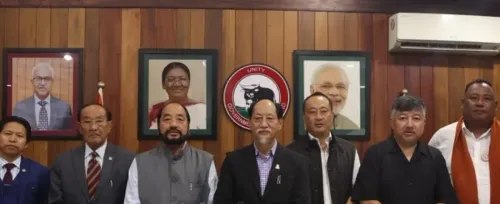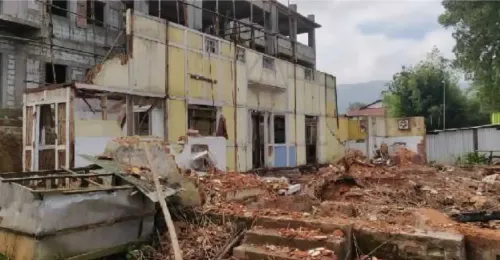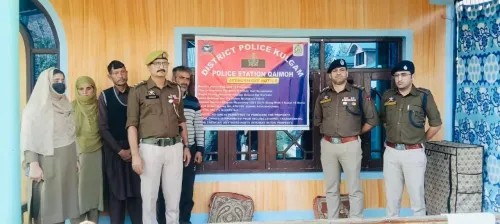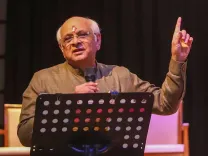Is This a Turning Point for Maoism in Sukma with 27 Surrenders?

Synopsis
Key Takeaways
- 27 Maoists surrendered in Sukma, marking a significant shift against Naxalism.
- Chief Minister Sai emphasizes the importance of dialogue and development.
- Immediate assistance and rehabilitation offered to defectors.
- Government committed to a Naxal-free India by March 31, 2026.
- Community cooperation is crucial in combating insurgency.
Raipur, Oct 15 (NationPress) Chhattisgarh Chief Minister Vishnu Deo Sai hailed the recent surrender of 27 active Maoists in Sukma district as a "decisive blow to Naxalism", heralding a new chapter filled with trust, security, and development in the conflict-ridden Bastar region.
In a powerful statement, Sai emphasized that the Maoist insurgency is approaching its conclusion, with regions once marred by violence now moving towards dialogue and progress.
The group of surrenders included a notorious Maoist from the People's Liberation Guerrilla Army (PLGA) Battalion No. 01, who had a bounty of Rs 50 lakh, and surrendered in front of high-ranking police and Central Reserve Police Force (CRPF) officials.
Among those who defected was Oyam Lakhmu, a 53-year-old supply team commander in Headquarters Platoon No 2, who alone had a Rs 10 lakh reward on his head.
This group consisted of 10 women and 16 others, collectively carrying a bounty of Rs 50 lakh. They surrendered their arms, citing disillusionment with the "hollow" Maoist ideology, internal atrocities against tribals, and the growing presence of security forces as their primary reasons.
“The surrender of active members at various levels demonstrates the success of our ‘Naxalite Surrender and Rehabilitation Policy 2025’ and the ‘Niyad Nella Naar’ scheme,” Sai stated during his address.
He attributed this transformation to the government's "sensitive initiatives", the continuous establishment of security camps in remote forest areas, and the increasing trust in administration among local populations.
"Areas once shrouded in violence and fear are now witnessing a new dawn of development, dialogue, and trust," he added, pointing out that this is not merely a tactical victory but a significant change in the perspectives of misguided youth.
Sai commended the unwavering bravery and restraint of security forces, including the Chhattisgarh Police, District Reserve Guard (DRG), CRPF, CoBRA commandos, and Special Task Force, for guiding the conflict towards this "decisive turning point."
Each surrendered individual was promptly provided Rs 50,000 in assistance and will undergo comprehensive rehabilitation, which includes financial support, vocational training, and reintegration assistance as per the policy.
Under the visionary leadership of Prime Minister Narendra Modi and the strategic direction of Union Home Minister Amit Shah, Sai reaffirmed the nation’s commitment to achieving a Naxal-free India by March 31, 2026.
"Naxalism, which once posed a threat to our internal security, is now disintegrating on all fronts and entering its final phase," he declared in a post on X, expressing confidence that the government's multi-faceted approach—combining strict action with compassionate rehabilitation—will fulfill this aim.
This event in Sukma is part of a larger trend, with 78 Maoists surrendering across Bastar on the same day, including 50 in Kanker, who surrendered over 39 weapons such as AK-47s and INSAS rifles.
Since the BJP government took office in December 2023, approximately 2,000 Naxals have abandoned their arms statewide, a figure that Sai credits to the appeal of the policy and the cooperation of the community.
The 'Niyad Nella Naar' initiative, which centers on infrastructure development in 44 remote villages, has further weakened the Maoist grip by addressing issues like poverty and isolation. Experts see these developments as a sign of forthcoming peace in Bastar, where Maoist violence once accounted for 70 percent of India's LWE incidents.
As Sai expressed, "This is the outcome of our sensitive approach towards misguided individuals—offering not merely security, but a dignified future."
With the Union Home Ministry recognizing it as a "giant stride" towards a Naxal-free Bharat, Chhattisgarh’s determination appears steadfast, promising a brighter future for its tribal heartland.









